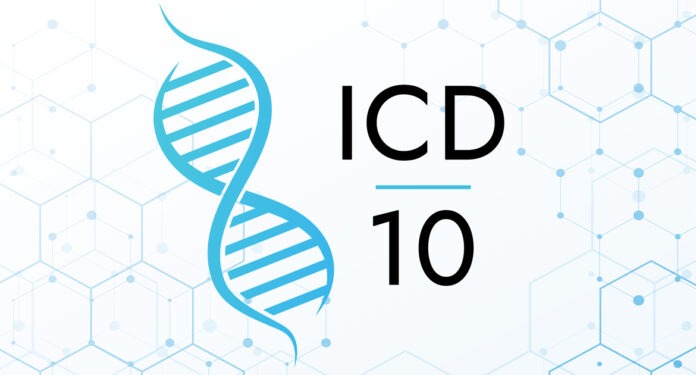Table of Contents
Accurate and efficient data management can mean the difference between life and death in healthcare. For many years, the industry relied on ICD-9 as its diagnostic coding standard, but in 2015, the United States made the monumental shift to ICD-10, an update that promised to revolutionize clinical data and disease management. This article explores the implications of ICD-10, the benefits, challenges, and potential future innovations, offering insights for healthcare professionals, medical coders, and those in the health IT sector.
Understanding ICD-10
The International Classification of Diseases, Tenth Revision (ICD-10), is a diagnostic coding system that healthcare providers worldwide use for clinical diagnoses and treatment planning. It replaced the outdated ICD-9 system, which needed to be revised to capture the complexities of modern healthcare practices.
ICD-10 is much more detailed, with over 68,000 diagnostic codes compared to ICD-9’s 14,000 codes. This expanded system allows for a more nuanced and precise description of patient conditions, facilitating improved communication between medical professionals and leading to better disease tracking, management, and analysis.
The accuracy of ICD-10 coding is paramount. It directly impacts patient care and facility reimbursement, making it a central pillar of modern healthcare operational success. With ICD-10, coders have a richer vocabulary to convey patient information accurately, ensuring that healthcare facilities are adequately compensated for their services and that predictive analysis is performed with the best data possible.
Benefits of ICD-10 Implementation
The implementation of ICD-10 promised a multitude of benefits to the healthcare industry. One of the most significant advantages is the enhancement of data accuracy. The expansion in codes allows for more precise patient condition descriptions, yielding better data for analysis and reporting, leading to heightened clinical quality measurement.
Additionally, ICD-10 improves disease tracking and management. With more detailed codes, healthcare professionals can more effectively monitor the prevalence and trends of various diseases. Such insights are crucial for detecting and managing outbreaks early and for establishing effective public health policies and programs.
The most tangible benefit is the transformation of the reimbursement process. Accurate coding under ICD-10 ensures that providers are rightly paid for their services, aligning more closely with the care delivered. This not only safeguards the financial health of healthcare institutions but also contributes to the overall efficacy of the healthcare system.
Challenges in Implementing ICD-10
Despite its promising benefits, the transition to ICD-10 was challenging. One of the primary hurdles was the extensive training required for healthcare professionals to familiarize themselves with the new coding system. The large volume of codes and the increased specificity demanded a steep learning curve.
Another challenge arose from the increased complexity of documentation. To accurately code under ICD-10, healthcare providers needed to maintain more extensive and detailed patient records, often resulting in a heavier administrative burden and potentially leading to workflow disruptions.
Transition issues were also a significant concern. Migrating from ICD-9 to ICD-10 was a complex process that required meticulous planning and execution. Any disruptions in the transition could lead to delays in patient care, miscommunication between providers, and inaccuracies in billing.
Nonetheless, the healthcare industry adapted, overcoming these challenges through concerted training efforts, the development of supportive technologies, and a collective resilience to ensure the successful implementation of ICD-10.
Impact on Clinical Data and Disease Management
The impact of ICD-10 on clinical data and disease management has been profound. Healthcare professionals now have more comprehensive patient data at their fingertips, which has led to enhanced patient care and outcomes. From identifying rare diseases to monitoring chronic conditions, the details provided by ICD-10 coding have enabled more personalized and effective treatment plans.
ICD-10 has also streamlined the data analysis process for research purposes and public health initiatives. Researchers and analysts can now rely on a broader and more accurately coded dataset, facilitating more in-depth studies and more robust conclusions. The information is invaluable for advancing medical research and tailoring interventions to specific patient needs.
Integration with electronic health records (EHRs) further solidifies the impact of ICD-10 on clinical data management. The seamless transfer and storage of coded patient information in digital records enable faster, more accessible, and more reliable data management. This integration promises a future where patient data is available instantly and securely, improving care coordination and supporting evidence-based decision-making.
Future Trends and Innovations in ICD-10
The evolution of ICD-10 and its impact on clinical data and disease management will continue to unfold through future trends and innovations. Automated processes in coding, enabled by sophisticated software, are likely to reduce the administrative burden associated with ICD-10 and improve the efficiency and accuracy of coding practices.
Adopting artificial intelligence (AI) and machine learning in healthcare is another potential growth area. These technologies can analyze vast amounts of ICD-10 data to identify patterns, predict disease outcomes, and suggest personalized treatment plans. Such capabilities could revolutionize the management of chronic diseases and the provision of preventive care.
Predictive analytics is yet another frontier that ICD-10 opens. By leveraging the detailed codes to forecast patient health and healthcare trends, providers can take proactive measures to prevent illnesses and manage resources more effectively. This not only advances the role of healthcare in maintaining patient wellness but also contributes to the sustainability of healthcare systems.
Conclusion
The implementation of ICD-10 has marked a significant milestone in the evolution of clinical data management, with far-reaching effects on disease tracking, patient care, and the overall efficacy of healthcare systems. While the transition presented challenges, the industry has emerged as more muscular, capable, and equipped to handle the vast amount of data that ICD-10 brings.
Healthcare professionals, coders, and IT specialists face an exciting future with ICD-10, replete with opportunities to harness its potential for improving patient health and advancing medicine. Much work is needed, but the beacon of accurate and comprehensive clinical data shines brightly, guiding the healthcare industry toward new patient-care horizons.
With the new coding system firmly in place, the call to action for healthcare professionals is clear: adapt, learn, and leverage ICD-10 to its fullest extent. The path ahead is continuous improvement and innovation, with ICD-10 as the foundation for a dynamic, data-driven approach to healthcare.





